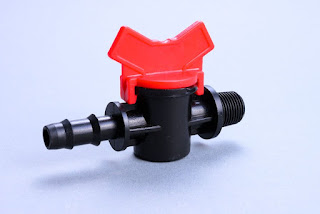Plastic Injection Molding in Chocolate Packaging Manufacturing
Plastic injection molding is a widely used manufacturing process for creating a wide range of products, including packaging for food and beverage products. Chocolate packaging is one of the many products that can be produced using plastic injection molding.
One of the key advantages of plastic injection molding in chocolate packaging manufacturing is that it allows for the creation of complex shapes and designs that cannot be achieved with other manufacturing processes. This is important for creating packaging that is both functional and aesthetically pleasing.
Another advantage of plastic injection molding is that it allows for the production of large volumes of packaging at a relatively low cost. This is important for a chocolate packaging manufacturer who needs to produce large quantities of chocolate packaging to meet demand. In this blog, we will discuss the plastic injection molding process and its use in chocolate packaging manufacturing.

Materials Used in Chocolate Packaging Manufacturing
The materials used in chocolate packaging manufacturing can vary depending on the specific requirements of the product being produced. Some of the most common materials used in plastic injection molding for chocolate packaging include:
1. Polystyrene (PS) - This is a common plastic material used in the production of chocolate packaging due to its low cost and high impact resistance.
2. Polyethylene Terephthalate (PET) - This is a popular material for chocolate packaging due to its excellent barrier properties and ability to withstand high temperatures.
3. Polypropylene (PP) - This material is commonly used for chocolate packaging due to its high resistance to moisture and chemicals.
How to Design, Print, and Vacuum Custom Chocolate Molds
Designing, printing, and vacuum-forming custom chocolate molds is a relatively straightforward process that can be done with some basic equipment and materials. In this blog, we will outline the steps involved in designing, printing, and vacuum-forming custom chocolate molds.
Designing Custom Chocolate Molds
The first step in creating custom chocolate molds is to design the mold using computer-aided design (CAD) software. The design should include all the necessary details, such as the shape, size, and texture of the mold.
Once the design is complete, it needs to be converted into a 3D printable file format. There are several software programs available that can convert CAD designs into 3D printable files, such as .stl or .obj.
Printing the Mold
Once the 3D printable file is ready, it can be printed using a 3D printer. The printer will create the mold layer by layer, using the material specified in the file.
There are several types of 3D printing materials that can be used for creating chocolate molds, including PLA, ABS, and PETG. PLA is a popular choice as it is food-safe and easy to print.
Once the mold is printed, it needs to be cleaned and smoothed to remove any imperfections or rough edges. Sandpaper or a file can be used to smooth the mold surface.
Vacuum-Forming the Mold
Once the mold is ready, it can be used for vacuum-forming the chocolate. Vacuum-forming is a process in which a sheet of plastic is heated until it becomes pliable, and then stretched over the mold using a vacuum to create a precise and detailed shape.
To vacuum-form the mold, the following steps can be followed:
● Cut a sheet of food-grade plastic into the desired size and shape, leaving some extra material around the edges.
● Heat the plastic sheet until it becomes pliable using a heat gun or oven.
● Place the heated plastic sheet over the mold, making sure that it covers the entire surface of the mold.
● Turn on the vacuum, which will suck the plastic tightly onto the mold surface, creating a detailed impression of the mold.
● Allow the plastic to cool and harden before removing it from the mold.
● Trim the edges of the plastic to remove any excess material.
● The vacuum-formed plastic mold is now ready to be filled with melted chocolate and allowed to set.
Conclusion
Plastic injection molding is a popular manufacturing process used in the production of chocolate packaging. The process allows for the creation of complex shapes and designs, which is important for creating packaging that is both functional and aesthetically pleasing. Additionally, plastic injection molding allows for the production of large volumes of packaging at a relatively low cost, making it an ideal choice for a chocolate packaging belgium who needs to produce a high volume of chocolate packaging to meet demand. The materials used in chocolate packaging manufacturing can vary depending on the specific requirements of the product being produced, with polystyrene, polyethylene terephthalate, and polypropylene being some of the most common materials used in plastic injection molding for chocolate packaging.

Comments
Post a Comment